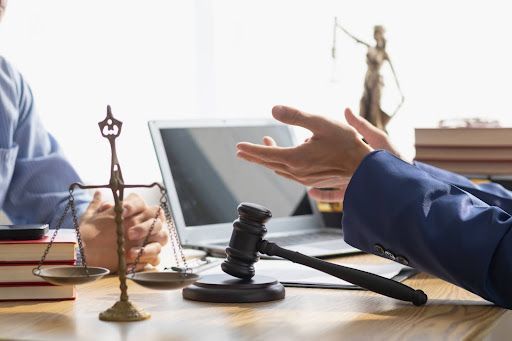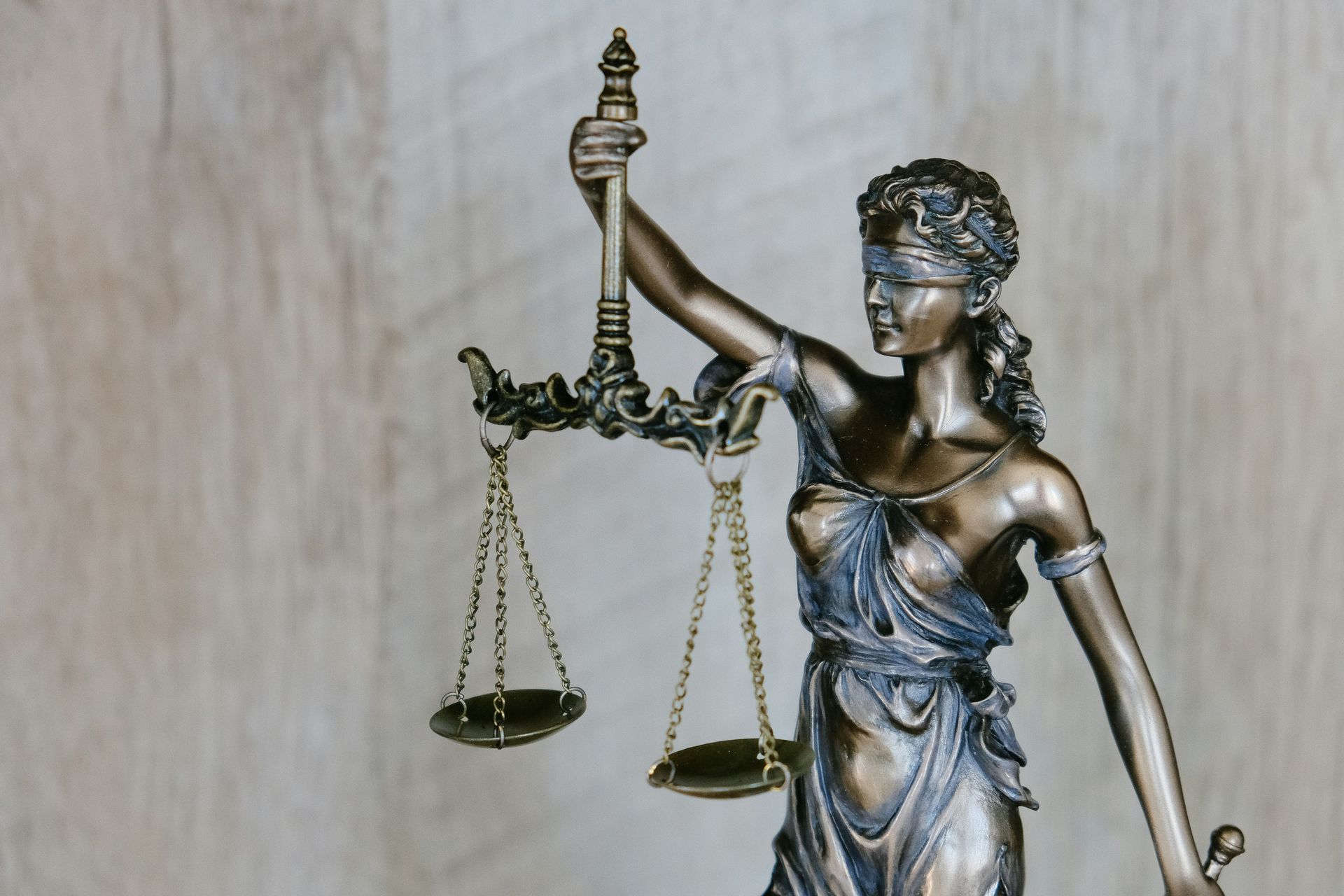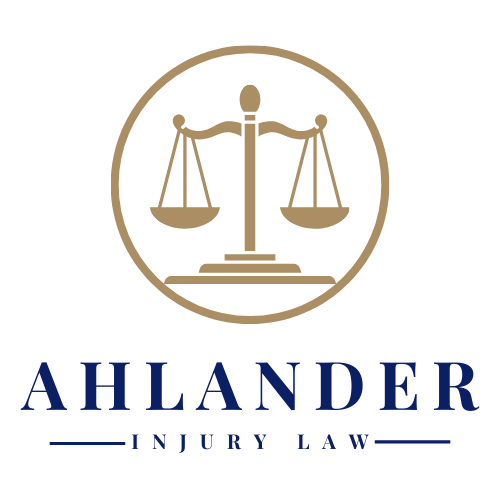Negligence Defined: How Courts Determine Fault in Injury Cases
Negligence, a term often heard in legal disputes, is a complex concept that courts use to assign blame in injury situations. When an individual fails to act with the caution that a reasonable person would have under the same circumstances, it can lead to harmful situations
I. The Legal Concept of Negligence
The principles of negligence form the cornerstone of personal injury law, affecting countless lives each year in Las Vegas and Spring Valley. When misfortune strikes and injuries occur, the notion of negligence is crucial in determining who is legally responsible. In simple terms, negligence refers to a failure to act with the level of care that someone of ordinary prudence would have exercised under the same circumstances. Breaking this down, there are four pivotal elements: Duty, Breach, Causation, and Damages.
A. Definition and Components
Let's dissect these elements further to understand their significance in the context of personal injury law. Duty refers to the responsibility one party has to avoid causing harm to another. In a broader societal context, we all have certain duties, whether it's a driver's obligation to follow traffic laws or a business owner's need to keep their walkways safe for customers.
The breach is when an individual or entity violates this duty of care. Causation connects the breach directly to the injuries suffered—meaning the breach must have caused the harm. Lastly, Damages are the actual losses resulting from the injury, which may include medical bills, lost wages, or pain and suffering.
B. Duty of Care
Given the diverse situations in which a person can find themselves, duty of care is not a one-size-fits-all concept. For example, healthcare professionals have a high standard of care towards their patients, reflective of the trust placed in their expertise. Drivers owe a duty to others on the road to operate their vehicles safely and abide by traffic laws. Establishing what this duty entails is the first step in applying the concept of negligence.
C. Breach of Duty
Identifying a breach of duty involves comparing what the at-fault party did or did not do against what a reasonably careful person would have done in the same situation. When drivers text while driving or when stores neglect to clean up a spill, these actions (or inactions) can lead to harm—and potentially a breach of the duty owed to someone else. In the bustling streets and neighborhoods of Las Vegas and Spring Valley, such oversights can have significant repercussions, underscoring the need for vigilance and adherence to safety protocols.
Concrete examples often help in understanding these principles, like in cases of car accidents where failure to yield at an intersection can lead to traumatic collisions. Examples can also be found in situations where property owners neglect to address hazards on their premises, leading to preventable slip and fall injuries.
Understanding negligence is crucial for anyone who has suffered an injury, as it provides the framework that enables the law to fairly apportion responsibility. Perhaps more importantly, it serves as a standard encouraging all to act responsibly, fostering a safer environment for everyone in our community.
II. Establishing Negligence in the Courtroom
A. The Role of Evidence
To the uninitiated, the courtroom may seem a complex arena that only those well-versed in legal intricacies can navigate. The truth is that the many legal battles, especially those involving negligence, lie in something much more approachable: evidence. Photographs of the scene, footage from nearby surveillance cameras, and witness statements form the bedrock of proving negligence. It is evidence like this that speaks volumes, cutting through confusion and illuminating the facts for everyone to see.
For residents in Las Vegas and Spring Valley, understanding the importance of properly collecting and preserving evidence following an incident cannot be overstated. Whether it's a slip on a casino floor or a collision on the bustling Las Vegas Strip, reliable evidence is indispensable. It substantiates claims and provides a strong foundation for arguing negligence in court.
Parties to a personal injury case must also understand evidence handling — from preserving the integrity of physical evidence to ensuring the credibility of witness testimony. This is where the expertise of legal professionals comes into play, guiding clients through the process and keeping the evidence compelling and admissible. More about the role of evidence in court.
B. The Plaintiff's Burden of Proof
In civil cases, such as those concerning personal injury and negligence, the burden of proof rests upon the shoulders of the plaintiff — the injured party bringing the claim. This responsibility means that they must convince the court that their allegations hold more truth than not, a standard known as 'preponderance of the evidence'.
So, how does this translate to action for those seeking redress for their injuries in our communities? Strategically, it involves compiling comprehensive evidence, and piecing together a narrative that leaves little doubt about the defendant's negligence. It may also require expert testimony to shed light on the technical aspects of the incident, such as the forces involved in a car crash or the expected protocols in a medical procedure gone awry.
For many in Las Vegas and Spring Valley who find themselves in the aftermath of an injury, the burden of proof is more than a legal hurdle; it's a means to validate their experience and seek justice. With each meticulously gathered piece of evidence and every expert deposition, plaintiffs build their case not just for compensation but for acknowledgment of the wrong they've endured.
III. Comparative and Contributory Negligence
A. Differing Jurisdictional Approaches
In the mosaic of the American legal system, states have developed different approaches to handling negligence in injury cases. These variations often center around two doctrines: comparative and contributory negligence. Comparative negligence allows a damaged party to recover compensation even if they are partially at fault, with the caveat that their recovery is reduced by their percentage of fault. In contrast, contributory negligence can bar recovery entirely if the plaintiff is found to even be minimally responsible for their own injuries.
Nevada, including the bustling communities of Las Vegas and Spring Valley, follows the model of modified comparative negligence. This gives individuals who have sustained personal injuries due to another’s actions a fair opportunity for compensation, as long as they are less than 50% at fault themselves. It ensures a more balanced justice system where responsibility is shared proportionally to the fault. For those navigating the complexities of an injury case, understanding this legal landscape is vital.
B. Proving Fault
The nuances of establishing fault under comparative negligence often involve meticulous scrutiny of the incident. Every action, decision, and contributing factor is weighed to allocate fault among all involved parties. It's a process that aims to reflect the multifaceted nature of accidents and mishaps, acknowledging that liability may not rest with a single entity.
In the courts of Nevada, the percentage of fault can significantly impact the potential compensation one might receive. Demonstrating fault successfully can be akin to piecing together a jigsaw puzzle, with every fragment — from electronic records of cell phone use while driving to eyewitness accounts of a store's unmarked hazard — serving as a critical piece of the overall picture. Relevant case studies have shown the application of comparative negligence in scenarios ranging from pedestrian accidents to multi-car pile-ups, providing residents with insights into how their own cases might unfold.
For the community members of Las Vegas and Spring Valley, recognizing the role of comparative negligence in the justice system signifies not just a chance for recompense but a broader social commitment towards accountability and safer practices for everyone.
IV. Defenses to Negligence Claims
A. Common Defenses Used by Defendants
In the dynamic of a personal injury lawsuit, defendants have an array of strategies to counter negligence claims. Some common defenses include claiming that the plaintiff assumed the risk of injury, that pre-existing conditions were the true cause of the damages, or that the plaintiff signed a waiver of liability, thus exonerating the defendant from responsibility.
Assumption of risk becomes relevant in cases where an individual willingly participates in potentially hazardous activities, like skydiving or sporting events. The pre-existing condition defense can be invoked if there is a medical history that may explain the injuries independently of the incident in question. As for waivers of liability, while common in recreational sports or employment contracts, their enforceability can be challenged in court, especially when gross negligence is involved.
B. Strategic Considerations for Defense
When building a defense against negligence, attorneys take great care to examine every element of the plaintiff's claim. Disproving just one element of negligence - duty, breach, causation, or damages - can significantly weaken a case, sometimes leading to its dismissal. Experienced legal counsel, familiar with the intricacies of Nevada's laws and the precedents set in the Silver State's courts, is often key in navigating these matters.
For the accused party, strategic defense may also involve alternative dispute resolution methods like negotiations and settlements, or it might focus on presenting a robust case during trial. Defendants may need to gather evidence demonstrating due diligence or compliance with relevant regulations, contrasting the plaintiff's account of events.
At the end of the day, defenses to negligence claims don't just aim to limit legal liability; they serve to clarify the circumstances of complex incidents, ensuring that the justice system accurately evaluates each case based on its specific details and merits.
V. The Impact of Negligence on Damages and Compensation
A. Calculating Damages
When negligence has been established, the courts then focus on the repercussions it has had on the plaintiff's life. Calculating damages is far more than a mere formality—it's a complex process that aims to quantify the physical, emotional, and financial toll that an injury has taken. In Las Vegas and Spring Valley, this could mean accounting for extensive medical treatments due to a car accident or quantifying the long-term impacts of a fall in a local business.
Economic damages are relatively straightforward, covering objective financial losses like medical bills and lost earnings. Non-economic damages prove more elusive, as they strive to compensate for the subjective pain and suffering endured by the victim. The degree of negligence plays a crucial role in these calculations, often influencing not only the amount awarded but also the very possibility of compensation.
B. Mitigating Damages
The concept of mitigating damages is predicated on the idea that injured parties should take reasonable steps to minimize their losses. This might involve following through with necessary medical care or seeking employment if capable. The courts expect a proactive approach, and failure to mitigate can lead to a reduction in the damages awarded.
Legal precedents set by Nevada courts underline the importance of this duty, showing that even as victims seek compensation, they also bear a responsibility for their own recovery. Real-world examples of mitigation might include accepting a different job role post-injury or documenting attempts to find comparable employment.
VI. Recent Trends and Case Law in Negligence
A. Influential Cases
As society evolves, so does the interpretation of negligence. Landmark cases not only reflect broader societal changes but also set precedents that shape future legal proceedings. By examining these cases, residents of Nevada can gain a deeper understanding of how negligence is being redefined and how it may impact their own legal situations.
B. Evolving Legal Standards
Further impacting the landscape of negligence are the currents of technological advancements and cultural shifts. For example, the increasing prevalence of smartphones has brought about new considerations in distraction-related accidents, while societal attitudes towards safety and prevention have heightened expectations of care. Keeping abreast of these trends and legal standards is paramount for anyone involved in a negligence case, as it can inform strategies and influence outcomes. More on evolving legal standards in negligence.
The principles of negligence are foundational to the pursuit of justice within the sphere of personal injury law. They provide a framework for understanding responsibility and guide the allocation of compensation to those who have suffered due to others' carelessness. For anyone impacted by such incidents in Las Vegas and Spring Valley, an intimate acquaintance with these principles is indispensable.
Whether you're an individual who's experienced an unfortunate incident or merely a concerned citizen, grasping the workings of negligence law empowers you to better navigate the legal system. It's with this knowledge that one can assert rights, fulfill responsibilities, and contribute to the collective safety of our community.
For those affected by personal injuries in Las Vegas or Spring Valley and in need of guidance or representation, consider reaching out to a law firm that understands the complexities of negligence law and is dedicated to advocating for your rights.
A firm like
Ahlander Injury Law could provide the legal support you deserve, helping ensure that your path to recovery and justice is well-founded and clearly charted.





